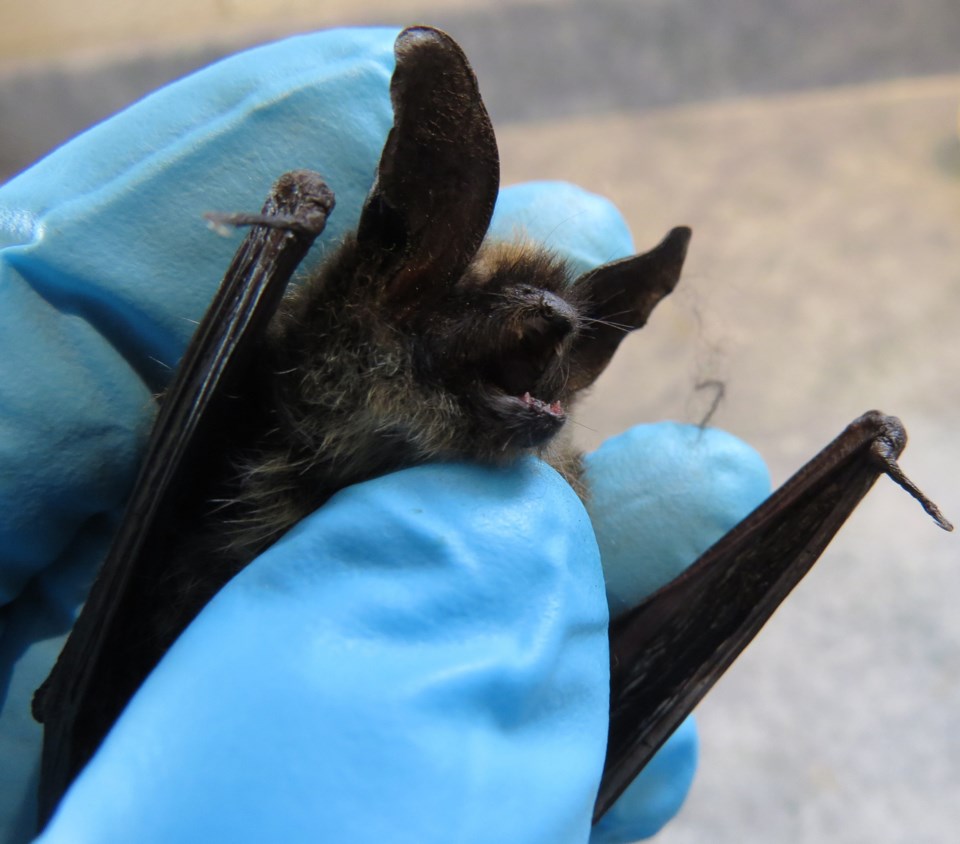A deadly disease that's killing bats could be making its way to B.C.
And local researchers want us to keep an eye out.
Researchers say a deadly fungus that has nearly wiped out a North American bat species hasn't yet spread to British Columbia, giving them valuable time to study whether probiotics can prevent the disease.
Scientists have been studying white-nose syndrome (WNS) in B.C. for the last three years.
The condition kills the bats by forcing them to wake from hibernating and use their energy to groom the fungus off their bodies.
Little brown myotis bats were once considered the most populous species of bats in North America.
The disease has decimated them, and the species was declared endangered by the federal government in 2012 — six years after the first case of white-nose syndrome was documented on the continent.
The first bat with the syndrome was discovered on the west coast in 2016, and the disease has since spread to several counties across Washington State.
It was estimated that the disease would reach B.C. within five years of being found in Washington, prompting the establishment of a community monitoring program.
WHITE-NOSE SYNDROME HEADING TO B.C.
In a press release, The BC Community Bat Program, in collaboration with the Province of BC, is asking the public for help in the effort to detect and prevent the spread of white-nose syndrome in BC’s bats.
Residents are asked to report any bat activity observed in winter, when they should be hibernating, and any sick or dead bats found before May 31.
Biologists say the arrival of WNS in B.C. is imminent, and people should be on the lookout for affected bats in southern regions of the province.
The Tri-Cities, with its large regional parks, including Colony Farm Regional Park in Coquitlam where bat 'condos' were recently built, has a well-established bat population.
"Without help from the public, detection of WNS is challenging because bats in B.C. hibernate alone or in small groups across the province. Increasing the number of reports from the public is the best chance to understand how WNS might spread and affect local bat populations, and how to respond," stated researcher Aimee Mitchell.
Mitchell, who is the Fraser Valley regional coordinator for the community bat program, stated that although there is not yet a proven cure for WNS, several promising treatment options are being developed, and it may be possible to mitigate the effects of this wildlife health crisis.
“We are encouraging the public to report dead bats and sightings of winter and early spring bat activity to the B.C. Community Bat Program,” she stated.
REPORT DEAD BATS OR BAT SIGHTINGS
Here's how to help:
- If you find a dead bat or have sightings of winter bat activity, please report to the B.C. Community Bat Program online, via email at [email protected] or by calling 1-855-922-2287 (1-855-GOT-BATS, ext. 23)
- Sleeping bats should be left alone — keep your distance, snap a photo and report it to the B.C. Community Bat Program
- Never touch a bat with your bare hands
- If you or your pet have been in direct contact with the bat you will need further information regarding the risk of rabies to you and your pet
- with a file from The Canadian Press



